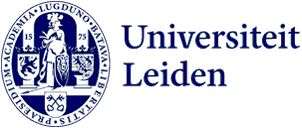
Actively working with the teaching material in the classroom
How do you get more interaction with your students during class? Paz Gonzalez has devised a method by which she gives her students an active role during class, turning (even large-scale) lectures into a seminar.
What did you make?
'For 12 classes of the Core Curriculum Linguistics, I have developed practice material with answers. I divide my lecture into two parts. I start with the explanation of the course material and in the second part, students get to work with the practice material, directly applying the knowledge they gained during the first part of the lecture. This way, the second part of the lecture actually becomes a kind of seminar.
The programme I use to share practice material with students is called Wooclap. This is an online tool that allows students to "vote" for the correct answer to a practice question during lecture. I don't show the solution until everyone has given their answer. This way, students can master the material without me spending time on correction work.
The set of exercises I developed can be used both formatively (during class) and summatively (during tests).'
What was the reason?
'The Core Curriculum course is a first year's compulsory course, with +/- 200 students from different language courses. The course was set up as a lecture, but that did not work properly. Students had too little understanding of the material and too few practice moments.
I believe that more practice moments are needed during class. In this way, students get a better understanding of the material and I know if students have mastered it. '
What was the setup of your course?
'The course is taught in the first semester and is divided into two blocks. There is a total of 2 hours of class per week for 12 weeks. I use the exercises in the second hour of each lecture.'
How do you go about it?
'Some lectures are given by guest lecturers, because of this there are often "last minute" changes. Only when I know exactly what the lecturer is going to say can I make the exercises. For this reason, I sometimes make the exercises only shortly beforehand. I send these exercises to my student assistant for the following week. She puts the exercises into Wooclap and figures out which question type best fits the exercise. We have a weekly one-hour meeting, where we go over everything and make any necessary adjustments and voilà, the exercise material for the next lecture is finished.'
What support did you get in developing this teaching method?
'Making and correcting many exercises is not feasible if I have to do everything myself. I therefore applied for a grant through ECOLe for this educational innovation project. This gave me time last summer to come up with exercises. In addition, during this college term, I have a great student assistant, Claudia Berruti, who is further developing my exercises in Wooclap. ECOLe helped Claudia get started in Wooclap and helps with questions.'
What is the advantage of this method?
'I have more time to prepare the lectures and can reach the students better during practice moments.n tijdens oefenmomenten. Discussion arises and everyone has to participate.
Aside from that, the exercises are used optimally so that students are better prepared for the tests. '
What are the points of attention?
'Right now, I am very satisfied with this new approach. During the classes I can see which topics need attention. There are some students who do not take the exercises seriously, but fortunately that does not get in my way.'
What advice do you have for other teachers
'When you are doing it for the first time, you don't yet know which questions students find difficult and which topics you need to pay extra attention to. So be prepared for some improvisation!
Also be careful not to come up with too many exercises per lecture. In my enthusiasm I sometimes came up with too many exercises, so that I could not cover everything. This is because the questions create discussion, which is very good, but also takes time. '
Want to learn more about Wooclap? Click here for more information.
Lunchbyte - Actively working with teaching material in the classroom (25 November)
Want to learn more about how Paz turns her lecture into a seminar? Come to the lunchbyte on 25 November at 12 AM!
Register for the lunchbyte